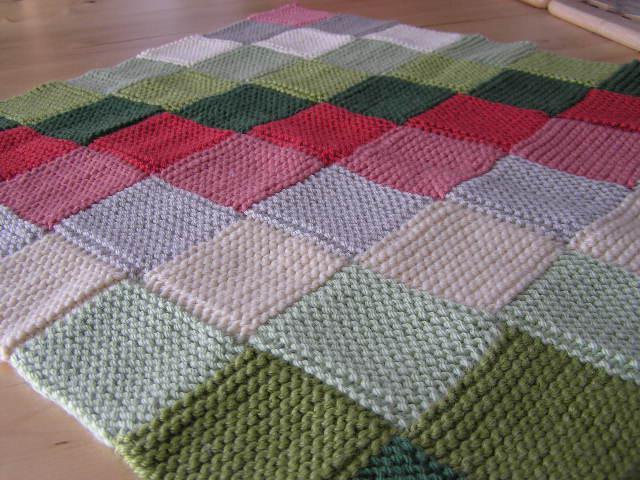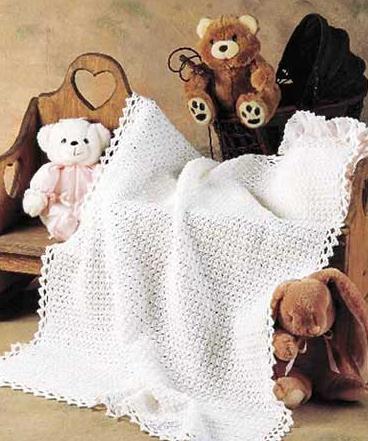Needlework for beginners: plaid of squares crochet
From time immemorial, fishermen have knit crocheted. Today with the help of it you can create various unique and useful things. But how to crochet a plaid, unfortunately, not everyone knows. Although doing it is not difficult. The shape, pattern, number of colors, the texture of the resulting product depends entirely on you. A flight of fantasy, limited only by your idea.
What could be easier than creating a warm,beautiful, fashionable plaid of squares crochet. Such a task will be on hand to any needlewoman who starts to make, and will be interesting to the master of ceremonies. It's so simple that any person can bind a plaid of squares with his own hands. Without spending huge money, you will always get the right, stylish, unique thing, an excellent gift for your loved ones.
You will need:
1) fantasy (in this case, the most important thing).
2) the hook (the number of the hook depends on the thickness of the threads you have chosen) for thick woolen threads, the hook No. 4-6 is acceptable, for finer yarn - No. 3-2.
3) yarn, if there is no required quantity, use the leftovers, so even more interesting.
4) patience.
To get started, select the main background, corresponding to this yarn should be more. Then proceed to the basis of the rug, i.e. squaring of squares.
The basic elements are squares, you can tie them in a million ways. From the chosen technology of knitting depends on the final appearance of the product, its structure.
The square is solid viscous, without a pattern.
A plaid of squares is crocheted with crocheted pillars without a crochet. The basic principle of creating this type of square is the straight rows of loops following one after another.
Technique of execution.
1) We dial any number of air loops (hereinafter referred to as VP), starting from the planned size of the square.
2) Plus the selected number of pairs of loops for lifting.
3) We knit a column without a crochet, in the third or the second from the end of the loop.
4) We send a series, VP, and repeat a sequence of columns.
5) How to determine the number of rows? Fold the opposite corners of the square diagonally. Is it an isosceles triangle? So the perfect square is ready.
The square is delicate.
The square, the so-called "grandmother", the mostknown for needlewomen. It was used by needlewomen at all times, and is still popular. The technique of its implementation is also very simple, so it is not difficult to tie a plaid from squares.
The technique of knitting.
1) We select 6 VP, we connect in a circle a connecting column.
2) 1 row: we knit 6 VP, then 3 bars into the ring.
3) Then we make 3 VPs, 3 columns in a ring, 3 VPs, 3 bars in a ring, 3 VPs, 2 bars in a ring.
4) We connect the connecting column to the 3rd VI of this series.
5) We dial 1 connecting column.
6) Then we make 3 VP, 2 columns are taken in the arch from the VP of the 1st row. Then we knit 3 VP and 2 posts in the same arch. We make 1 VP, 3 columns in the next arch, 3 VP, 3 posts in the same arch.
7) Repeat the procedure 2 times.
9) We knit 1 air. We close the row with a connecting column, inserting the hook into the upper loop of lifting this row.
10) 3rd row: make 4 VP, 3 posts in the arch of the lower row, 3 VP, 3 posts in the arch. Next 1 air loop, 3 posts in the lower arch, then 1 air, 3 posts in the arch, 3 VP, 3 posts in the arch (repeat 2 times). We knit 1 air, then 2 bricks into the lower arch. We close the row with the help of a connecting column. The square is ready, for larger sizes we repeat the scheme of the 3 rows.
The most pleasant final part.
There is a huge amount of connection techniquesparts. You can just sew all the pieces together, but it's better to tie them together. Here is one method: lay out the squares in the conceived order by the front side. We introduce a hook into the upper loops of the squares and connect the half-columns without the crochet. This connection is quite simple and the product looks neat. Now we wipe the plaid by hand, dry it, iron it on the wrong side. Voila, a plaid of squares crochet ready.
Now that you have a habit in knitting plaid with simple quartz patterns, you can try your hand at untying complicated lace elements, as well as knitting with two or more colors.







